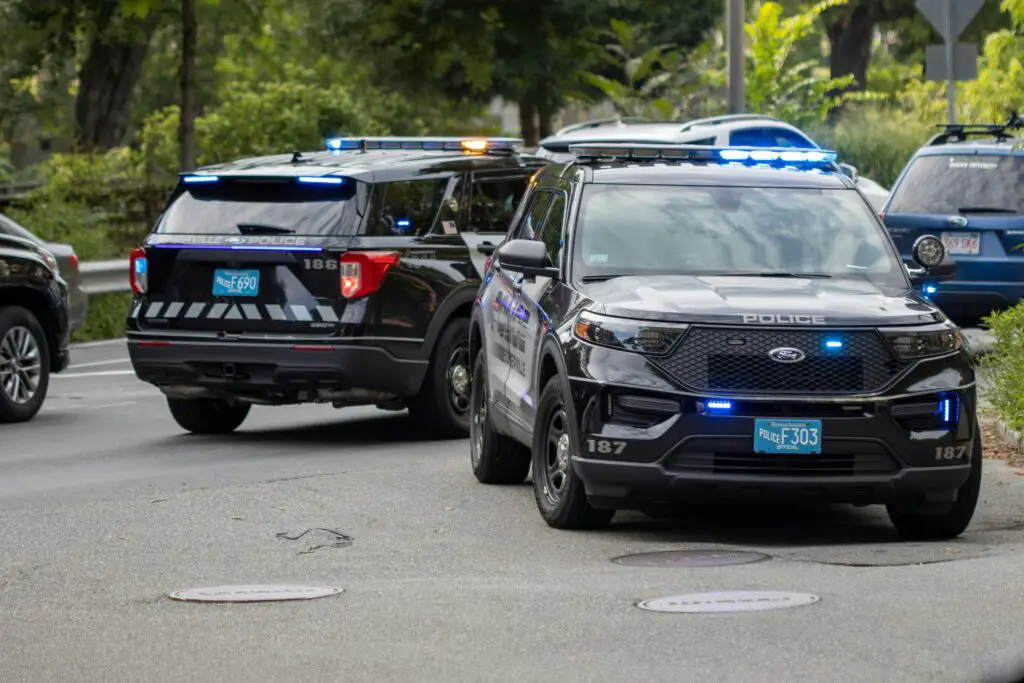Crime movies and TV shows often throw around the term “accessory to a crime” as legal jargon. Despite its commonality, few people can probably describe what it means. In reality, being an accessory to a crime is a serious offense of its own. In some instances, someone may become an accessory to a crime without much knowledge of doing so. Today, we will look at hit-and-run accidents and how bystanders can become an accessory to a crime.
Bystander Helps Hit-and-Run Getaway
This viral video vividly demonstrates how people can become accessories to a crime. It shows a car smashed into the side of a popular fast-food restaurant. The cameraman pans over the scene, showing the immense amount of damage the vehicle caused. The driver, a young woman, is exclaiming how she is afraid of going to jail and wants help to get away from the incident.
The cameraman quickly responds to her, asking if she wants to ride in his car. The woman agrees, walking toward the man to accept a ride away from the scene.
Helping a Hit-and-Run Suspect Escape is Illegal
As you have probably guessed, the man in the video is in the wrong for offering to help the woman leave the scene. In any situation, checking in on someone after a car wreck is completely understandable. Even if the person is guilty of the crash, ensuring they are okay is no grounds to make you an accessory to a crime.
What is illegal, on the other hand, is actively helping someone escape the scene of a crime. In fact, doing so can make you an accessory to a crime after the fact, which can land you with similar charges to the person who did the crime in the first place!
What Does it Mean to be an “Accessory to a Crime?”

A person becomes an accessory to a crime when they actively help someone commit a criminal act. People are also an accessory to a crime if they act to help someone conceal a crime that has already taken place.
There are a few elements that are required to make someone an accessory to a crime:
- Someone else must have committed a crime.
- The accessory must have known that a crime was occurring or someone was being charged.
- The accessory must have willingly acted to conceal, aid in, or otherwise participate in the criminal act.
- The accessory must have the intention to prevent the perpetrator from getting punishment.
In addition to this basic definition, two main classes further delineate when someone can be an accessory to a crime.
Accessory Before the Fact
The first primary type of accessory to a crime is “accessory before the fact.” Sometimes, this class is known as the “aider and abettor.” This type of accessory is someone who knowingly helps someone plan or enact a criminal act. It can also describe those who mediate or urge the perpetrator to commit a crime.
Some legal spheres delineate those who help plan a crime and those who help participate. In those cases, someone who helps plan is an accessory before the fact, while someone who participates is an aider and abettor.
Some examples of being an accessory before the fact or aider and abettor are:
- Giving someone a firearm to use during an armed robbery.
- Helping someone plan which houses to break into.
- Acting as a lookout while someone else commits a crime.
- Gathering a group of people to help commit a crime.
Accessory After the Fact

Slightly more obvious, people can also be an accessory after the fact. In these situations, the accessory knowingly helps someone conceal or escape responsibility after a crime has occurred. An accessory after the fact must recognize that a crime occurred or that someone faces active charges.
Some examples of being an accessory after the fact are:
- Driving a getaway car for someone.
- Helping someone escape the scene of a crime.
- Giving a friend an alibi when they weren’t actually with you.
- Harboring someone who is hiding from the police.
Accessory vs Accomplice: What’s The Difference?
Another important thing to note is that the terms accessory and accomplice can easily confuse each other. Put simply, the difference lies within the intent and level of participation during a crime.
Accessories provide assistance or aid to those who have committed a crime. They don’t usually partake in the actual crime itself and may only have limited knowledge of what specific crime took place. Due to this, accessories have less intent to commit the crime. For instance, helping a criminal hide from police or escape a crime scene would be an accessory.
Accomplices are more involved with the crime taking place. In addition to planning and urging like an accessory may, accomplices have the specific knowledge of what crime will take place. With this knowledge, they intend to help perform the crime with other perpetrators. An example of an accomplice could be someone who plans out a robbery and then joins in to help steal.
Summary
Ultimately, making someone a true accessory to a crime takes a lot. Legally speaking, someone has to know a crime has occurred and actively work to help the perpetrator get away with it. With that said the video above shows how bystanders can easily get dragged into a crime scene, sometimes without even knowing it! So, next time you find yourself in a similar situation, take a moment to remember exactly what the term “accessory to a crime” means!

